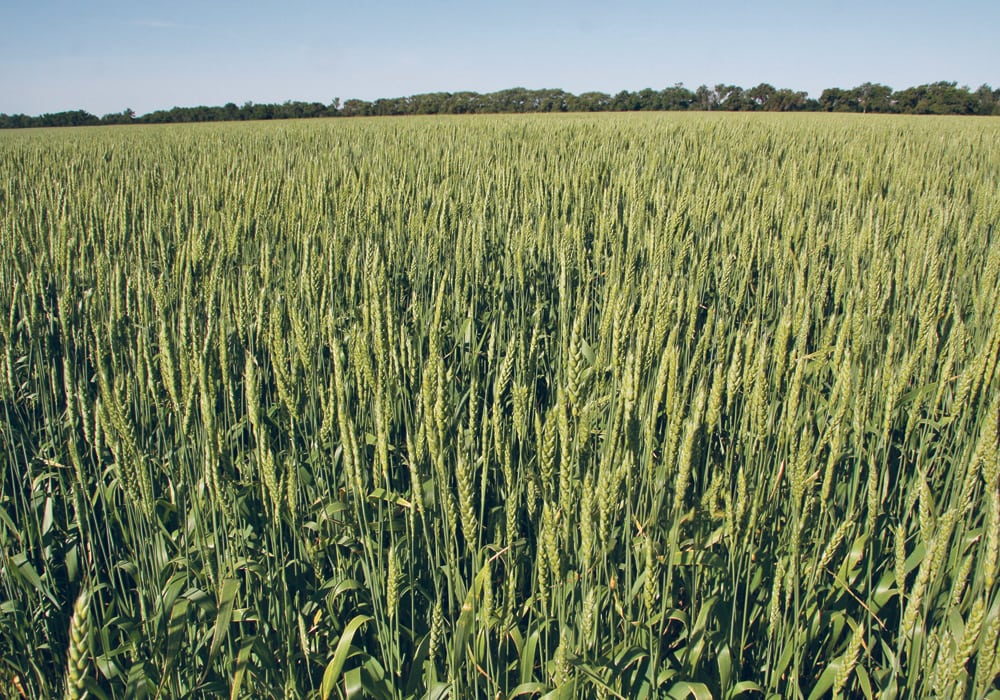The spring wheat crop is good to excellent in the state, but markets have likely already factored that into futures prices
Last summer, Dustin Johnsrud knew his spring wheat crop would be below average.
It was severely hot and dry on his farm near Epping, North Dakota, in the northwestern corner of the state, as minimal rain fell in May, June and July.
By harvest, some fields were better than expected. Others were as expected.
“Our fields to the east were in that 35-bushel range. But our fields on the west end of the farm were five to 10 bushels,” Johnsrud said in early July.
Read Also

Critical growing season is ahead for soybeans
What the weather turns out to be in the United States is going to have a significant impact on Canadian producers’ prices
The story was similar or worse, last year, across much of North Dakota. A prolonged drought cut into yields and forced some farmers to bale their wheat fields before harvest.
Things look very different this summer.
In early July around 80 percent of North Dakota’s spring wheat crop was rated as good to excellent, based on a North Dakota Wheat Commission crop progress report. Spring wheat also looks great in Montana, where 76 percent of the crop was rated good or excellent.
“It was dry during seeding but we ended up with some decent rains to get everything out of the ground. We’ve got the rains when we really needed them, so far,” Johnsrud said. “I think we should be able to produce a pretty decent crop.”
Data from the U.S. Drought Monitor illustrates how conditions are completely different from July of 2017.
- As of July 3, only three percent of the spring-wheat-growing areas in the United States were in a drought.
- On July 11, 2017, about 49 percent of America’s spring-wheat-growing region was in a drought.
Most spring wheat in the U.S. is grown in North Dakota and Montana. In 2018, farmers in those states seeded about 9.6 million acres of spring wheat, a sizable share of the 13.2 million for the entire nation.
Total U.S. acres were up 2.2 million from 2017, thanks to more spring wheat in North Dakota and Montana.
The improved growing conditions in the northern Plains, combined with additional acres, could weigh on spring wheat prices this summer.
But those fundamentals may already be baked into spring wheat futures.
“I think a lot of damage (to price) has been done,” said Bruce Burnett, director of weather and markets information for Glacier MarketsFarm.
“A lot of it has been priced in.”
Burnett is likely correct. From early June until early July, spring wheat futures in Minneapolis dropped like a watermelon thrown off a roof.
Futures prices were US$6.30 per bushel in late May and hit $5.35 in early July.
The drop can’t be attributed solely to more acres and improved growing conditions in the northern Plains because winter wheat futures also plummeted during June.
Kansas City wheat went from $5.50 per bu. in late May to around $4.90 per bu. in early June.
Looking backward at markets is easy; the harder question is what happens to spring wheat prices over the rest of the summer.
There are positive signs in global wheat fundamentals. Hot and dry weather this spring could cut into European output and drought will likely hit production from the Black Sea region
Reuters reported that Ukraine will harvest 24.72 million tonnes of wheat in 2018, down five percent from 26.15 million tonnes in 2017.
Russia’s wheat production may also drop because as estimates suggest the crop will be 10 percent smaller than expected.
The story from Europe and the Black Sea region could prop up winter wheat and spring wheat prices throughout the summer.
“The markets are still worried about the crop situation, internationally,” Burnett said. “Wheat stocks look like they’re not going to build … globally.”


















